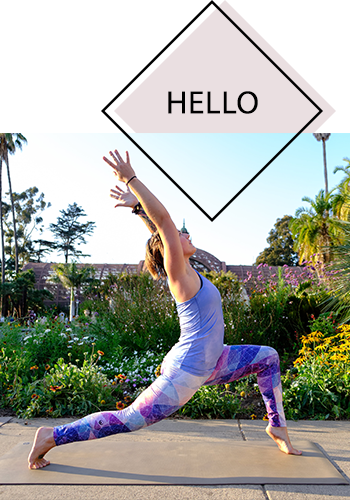Protecting Your Knees In Yoga : A Simple Guide
/Caring for your knees before, during and after yoga is important, especially if you’ve had an injury or knee pain before. Here are a few tips and tricks to help protect your knees.
Understand safe versus unsafe stretching
Yoga helps us learn the mind/body connection. It helps us listen closely to our bodies.
As you spend time on your mat, you’ll want to be mindful of any discomfort or pain you experience during a given pose. A sense of stretching, expanding or elongating can be a helpful sensation; sharp pain, on the other hand, is not.
The more you practice the more you learn to understand your own body’s subtle cues so you can find a balance between putting in effort to stretch more, and knowing when to back off. You’ll also learn how the breath supports healthy stretching during a yoga practice. If you’re holding your breath, that’s a sign that you need to do less in a pose.
Also keep in mind the balance between strength and stretching. For those with hypermobile joints, you can actually stretch too far where your joint isn’t being offered stability and can be put at risk. Keep this in mind if you tend to have super bendy joints, and ask your teacher for tips and to keep an eye on you during class. Keep in mind strong muscular engagement (like with your core) will help support all the surrounding limbs and joints in a pose. Always feel free to ask your teacher about this to get more specific ideas.
Also do remember that you are entitled to sit out any moves that you feel would be bad for your knees or any other part of your body in yoga class. Many people do this by sitting in Child's Pose (supported for those with knee issues of course, or Savasana - The Corpse Pose).
Support your knees with a compression sleeve
A knee compression sleeve can work wonders by supporting the joint and muscles around it as you move. Some are even designed to help support the healing process if you have an injury you’re on the mend from.
Use modifications
One of the most wonderful things about yoga is that almost any position can be modified. Modifications are all about getting the benefits from correct alignment without over stretching your own personal limits. Many people can benefit from modifications including those with knee injuries or issues.
When seated, use a block to elevate your hips.
Instead of placing your knee down in a pose like low lunge, take a high lunge position so you avoid putting any pressure on the knees.
Use blocks to help reach the floor during forward folding poses.
Keep a microbend in your knees instead of locking them out.
Listen to your body and skip poses that bring any sharp pain or strong feeling of hesitation/fear.
Choose classes mindfully
Be aware that some yoga classes may be a better fit than others for you right now. Hot yoga might be too much. A fast-paced Vinyasa class might be too much. An Ashtanga practice with a teacher who does a lot of hands-on adjustments might be one to avoid, or a yin class with a newer teacher who doesn’t cue how to use props. As with any yoga experience, give yourself permission to ask questions and ask for help from your teacher. And above all else, listen to your inner guidance.










Memoir ghostwriting is about transforming your life in the process of writing a beautifully-crafted book. Here’s why my clients often say the healing becomes the most valuable part.